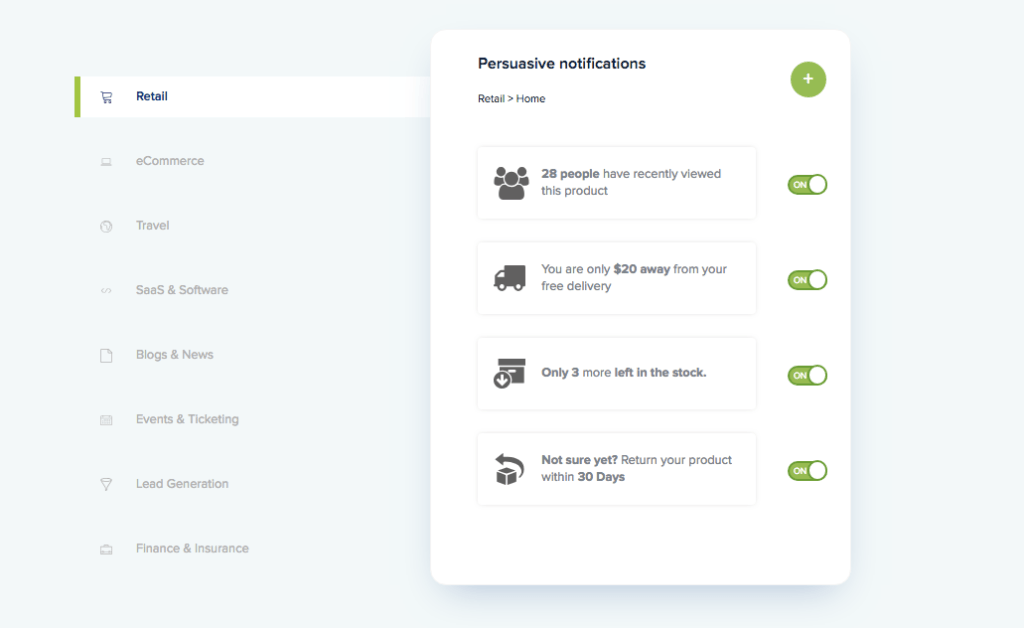What Is Nudging, And How Can It Boost Sales?
 This article was originally published on RetailSector.co.uk
This article was originally published on RetailSector.co.uk
—
Nudging is a subtle change made to a store’s environment that combine the psychological principles with the nudge theory to become powerfully nudge marketing notifications and messages.
It’s been a decade since the book Nudge was published and the term ‘nudging’ became a useful verb in the vocabularies of behavioural economists, psychologists and policymakers alike.
A ‘nudge’ is a term used to describe any change in the environment which steers an individual’s behaviour in a predictable way whilst preserving their freedom of choice. It is not a push, nor a shove, but a gentle nudge.
One of the co-authors of the Nudge book was later recruited by Barack Obama to the White House. Whilst the other, Richard Thaler advised policy makers in countries including Britain and France. Both authors helped to shape policies and used the concept of nudging to bring about behavioural changes for the benefit of society.
Nudges in the real world
In the 1960s Van Bedoff, a soldier at the time, noticed when returning from a mission that someone had put a small red dot in the urinals of airport restrooms. This led to a dramatic decrease in ‘misdirected’ flow.
Later he proposed to airports that they turn the red dots into flies. He was already employing ‘nudges’ to direct people’s behaviour without suspecting that years later this would become a renowned psychological concept. Since Van Bedoff, the concept has found a wide range of applications.
A recent study found that when a subject at school was called “geometry” boys performed significantly better than girls. However, when it was called “drawing figures” both genders performed equally. A simple change in the terminology of the curriculum led to a significant difference in performance – this represents nudging at its most innovative form.
But to better understand the principles that govern nudges, we need to delve deeper into our psychology and ask ourselves – how do people make decisions?
The theory behind nudging is built upon the heuristics-theory discovered decades earlier by Amos Tversky and Daniel Kahneman. They came to the conclusion that a big proportion of human decisions are impulsive and irrational, and are often triggered by environmental cues.
Richard Thaler and Cass Sunstein built their ideas upon these grounds and began to explore the ways in which these environmental cues can be used and the behaviours that they lead to.
How technology makes us more nudge-able
As our life is increasingly mediated by technology, nudging is widely utilised in shaping how our technological devices operate. When using these specifically-designed environments, we are often subjected to nudges unconsciously.
A clear example of this is the GPS system built into our smartphones and utilised by apps to begin suggesting local opportunities before we have the chance to have our say. Fitness apps which count our steps influence how we get around – whether we take the stairs or the lift. Our online banking and finance apps perhaps make paying with credit cards more painful, as we can constantly check our balance.
Marketers and web designers are increasingly utilising nudges in the customer experiences they create. Examples include offering product recommendations, targeted ads, and push notifications to their website users.
Another effective nudge that eCommerce websites have begun to employ is the use of push notifications and emoticons which directly appeal and tap the emotional buttons of the user.
How can I use nudging on my ecommerce store?
Combining the knowledge of professors such as Thaler and Sunstein with that of Tverksy and Kahneman, persuasive ‘nudge’ notifications can be created for eCommerce platforms.
Solutions are available on Shopify, which nudge users and utilise the main cognitive principles such as Urgency, Scarcity, Social Proof and Pain of Paying which urge customer to take quicker action when it comes to purchasing an item.
Nudging is a subtle change made to a store’s environment that combine the psychological principles with the nudge theory to become powerfully nudge marketing notifications and messages.

Urgency
This nudge utilises the principle of urgency. Urgency operates based on the notion that when there is a timeframe to make a certain decision people are more likely to switch off their rational thought and use their heuristic ways of processing information to act quicker.
Social Proof
This nudge is based on the principle of social proof. It is the most powerful mechanism in the marketer’s toolkit as we are more likely to be influenced by other people’s behaviour than by anything else. This is explained psychologically by our desire to fit in and be part of the social group rather than to feel excluded.
Scarcity
This nudge leverages the principle of scarcity. To put it simply, when there is only limited quantity of something, we perceive it as more valuable! Similarly to the principle of urgency, it puts pressure on people to act quickly to avoid missing the opportunity.
Cognitive Ease
This nudge operates using the principle of cognitive ease. Cognitive ease is a cognitive bias according to which we liken experiencing monetary loss to physical pain. By offering free returns, discounts and limited deals, marketers directly address this cognitive bias.
If eCommerce stores utilise the ‘nudging’ technique it will help provide them with an effective solution for their Shopify store. With platforms allowing you to install and enable default notifications in seconds, this allows you to boost your conversion rates and know that the platform is continually optimising.



